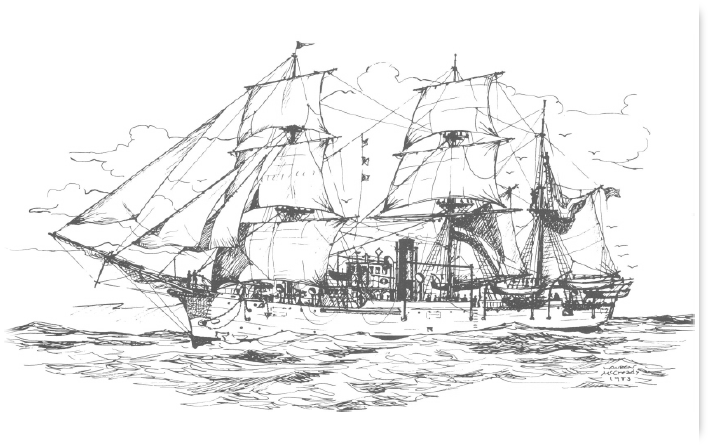#112 TV Emery Rice Steam Engine
1873
Mid-19th-century horizontal compound marine steam engine with return connecting rod
During the nineteenth-century transition from sail to steam, the poorly armored screw-propelled warships were given engines of low profile, fitting below the waterline for protection of vital parts. The horizontal compound engine of the Emery Rice is a unique survivor typical of the period 1840 to 1880. The 61-ton back-acting engine has an unconventional configuration in that its two cranks lie close to their cylinders and two off-center piston rods straddle the crank-shaft in a cramped, but efficient, arrangement. The cylinder bores are 28.5 and 42.5 inches. The stroke is 42 inches. With saturated steam at 80 pounds per square inch gauge and a condenser having 26-inch mercury vacuum, 560 indicated horsepower were produced at 64 revolutions per minute. The engine was designed by the bureau of steam engineering of the U.S. Navy and built by John Roach & Sons of Chester, Pennsylvania, for the U.S.S. Ranger, as the iron-hulled ship was first known.


Landmark Location
Kings Point, Long Island, N.Y.
Ceremony Notes
Sept. 28, 1985? The first designation ceremony was postponed because of a visiting hurricane.